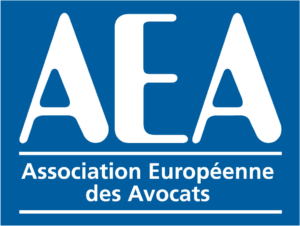Launched in the late 1960s by the US Department of Defense, the Internet became one of the most vital tools for scientific research and by the end of the 1990s, it had succeeded in attracting the business community.
One of the first functions of the Internet was the exchange of e-mails.
If the special law is an exception to general law, the same is not true for this type of mail….
Article 9(1) of the Directive of 8 June 2000 on electronic commerce provides that “Member States shall ensure that their legal systems make it possible for contracts to be concluded by electronic means [and] shall not result in such contracts being rendered ineffective and legally valid on the ground that they are concluded by electronic means”.
Good pupil, France has reformed its law on this subject.
While writing in electronic form was admitted only as evidence and by no means sufficient for the validity of a contract, article 1108-1 of the Civil Code provides, since the reform of 10 February 2016 that, when a writing is required for the validity of a legal act, it may be established and kept in electronic form.
This provision seems to be very broadly interpreted since the First Civil Division of the Court of Cassation considered on July 11th 2018 that, when a written document is required for the validity of a legal act, it can be established and recorded in an electronic form.
A priori, it would seem that the Court of Cassation applied purely is simply article 1108-1 of the Civil Code.
Nevertheless, the case in question concerned a sports agent contract and Article L222-17 of the Sports Code requires a written document for the contract to be valid.
In this case, general law is applicable in the face of special law.
However, questions arise.
Insofar as a legal act can be established in electronic form, how can the identity of the sender be certified?
Should we remove any possible doubt about the sender and make an electronic signature mandatory?
The decree of 28 September 2017 stipulates in particular that “the reliability of an electronic signature process is presumed, until proven otherwise, when this process implements a qualified electronic signature”.
There are currently three types of electronic signatures, all governed by the Regulation of 23 July 2014.
The simplest electronic signature consists in particular in digitising the paper signature or ticking a box digitally.
The simple signature process can be strengthened and acquire greater legal value by adding an identity validation step, as Yousign does with an SMS code received by the signatories and required to sign the document.
However, these mechanisms do not prove that the signed document has not been modified.
In addition, the identity of the signatory is not reliable.
This is why European law has developed the concept of “advanced electronic signature”.
This procedure involves compliance with the ETSI (European Telecommunications Standards Institute) signature standards and the eIDAS Regulation on electronic identification and trusted services for digital transactions in the European Union’s internal market, the use of a digital certificate associated with the signatory and an advanced system for verifying the signatory’s identity and the possibility of proving that the document has not been modified since its signature.
Finally, the qualified electronic signature, the only one covered by the 2017 decree and therefore presumed reliable by law.
The qualified signature procedure uses the same security criteria as the advanced signature but cannot be carried out entirely remotely. Indeed, in order for the identity of the signatory to be validated, it must be verified beforehand with a certification authority approved by the government.
In any case, these three types of signatures are valid.
The difference lies only in the burden of proof, it being recalled that “the legal effect and admissibility of an electronic signature as evidence in court may not be refused solely on the ground that it is in electronic form or that it does not satisfy the requirements of a qualified electronic signature” (Article 25 of EU Regulation 910/2014 of 23 July 2014).
These developments encourage the use of electronic writing, which can be an asset in business relations (speed, simplified formalism, etc.).
However, caution remains essential when contractual commitments are translated into e-mails.
All inter-professional exchanges should be given special attention….

